” India, the One land that all men desire to see, and having seen once, by even a glimpse, would not give that glimpse for all the shows of all the rest of the globe combined” – Mark Twain.
INDIA
Republic Of India – भारतीय गणराज्य : A country that leaves one spellbound with its alluring contrasts and striking features in all that it beholds! India is a 34,000 years old country with a rich legend and history. One is sure to get intermingled with the plaited knots of customary and contemporary ingredients of India. Where else will you experience spirituality and solitude than in the mystic land of the lords! The rich rituals, distinct culture of India, festivals, and ceremonies that India celebrates and unfold its legendary sagas.
Without question, India is the most engaging, colorful, chaotic, spiritual and life-affirming country in the world. It is an assault on the senses – all of them, nearly all of the time. Bounded by the majestic Himalayan ranges in the north and edged by an endless stretch of golden beaches, India is a vivid kaleidoscope of landscapes, magnificent historical sites and royal cities, misty mountain retreats, colorful people, rich cultures, and festivities. Modern India is home alike to the tribal with his anachronistic lifestyle and to the sophisticated urban jet-setter. It is a land where temple elephants exist amicably with the microchip. Its ancient monuments are the backdrop for the world’s largest democracy.
It is only in India where you have a desert, soaring Himalaya and dusty plains of the north, Beaches, exquisite Indian architecture, great cuisine, the oldest religion, culture, traditions and the largest number of palaces and forts.
India’s culture and heritage are a rich amalgam of the past and the present.
From choking metropolises to medieval villages, India is varied and ever-changing, a joyful assault on the senses that never fails to surprise. Massive relics of Empire, such as the Gateway of India, rub shoulders with art-deco curiosities, traditional temples, world-class restaurants and age-old bazaars.
This vast country offers the visitor a view of fascinating religions and ethnography, a vast variety of languages with more than 438 living languages, and monuments that have been present for thousands of years. As it opens up to a globalized world, India still has a depth of history and intensity of culture that awes and fascinates the many who visit there.
India’s rich and multi-layered cultures are dominated by religious and spiritual themes. While it is a mistake to assume that there is a single unified Indian culture, there certainly are unifying themes that link the various cultures.
The timeless mystery and beauty of India can be experienced only by visiting this ancient Land. There’s just one thing you’ll need to travel through 5000 years of culture and tradition- A comfortable pair of shoes.
Famous Quotes on India (by non-Indians)
- Albert Einstein said: We owe a lot to the Indians, who taught us how to count, without which no worthwhile scientific discovery could have been made.
- Mark Twain said: India is, the cradle of the human race, the birthplace of human speech, the mother of history, the grandmother of legend, and the great-grandmother of tradition. Our most valuable and most instructive materials in the history of man are treasured up in India only.
- French scholar Romain Rolland said: If there is one place on the face of earth where all the dreams of living men have found a home from the very earliest days when man began the dream of existence, it is India.
- Hu Shih, former Ambassador of China to USA said: India conquered and dominated China culturally for 20 centuries without ever having to send a single soldier across her border.

ETYMOLOGY
ONE LAND VARIOUS NAMES:
India – The name India is derived from Indus, which originates from the Old Persian word Hinduš. The name Indus is derived ultimately from Sindhu, the Sanskrit name of the river which is a part of Pakistan today but also meaning “river” generically. The English term is from Greek Ἰνδία (Hindia), via Latin transliteration India. Greek did not have a separate letter for the H sound in 500 BCE and used a sign of aspiration above the first vowel, which was eventually lost in Latin transliteration. The ancient Greeks referred to the Indians as Indoi(Ινδοί), which translates as “the people of the Indus”.
Hind / Hindustan – was originally a Persian word that meant “Land of the Hindus”; prior to 1947, it referred to a region that encompassed northern India and Pakistan. It is occasionally used to solely denote India in its entirety. Hind was notably adapted in the Arabic language as the definitive form Al-Hind (الهند) for India, e.g. in the 11th century Tarikh Al-Hind “History of India”)
Bhārat / Bhāratam – The geographical term Bharat which is recognized by the Constitution of India as an official name for the country, is used by many Indian languages in its variations. The eponym of Bharat is Bharata, a theological figure that Hindu scriptures describe as a legendary emperor of ancient India. The Sanskrit word bhārata is a vṛddhi derivation of Bharata, which was originally an epithet of Agni. The term is a verbal noun of the Sanskrit root bhr-, “to bear/to carry”, with a literal meaning of to be maintained (of fire). The root bhr is cognate with the English verb to bear and Latin ferō. This term also means “one who is engaged in the search for knowledge”
Āryāvarta – (आर्यावर्त, the abode of Aryans) is a name for North India, where the culture of the Indo-Aryans was based, in classical Sanskrit literature. Manu Smriti (2.22) gives the name to “the tract between the Himalaya and the Vindhya ranges, from the Eastern (Bay of Bengal) to the Western Sea (Arabian Sea)”
Jambudvīpa – (जम्बुद्वीप Jambu-dvīpa, lit. “berry island”) was used in ancient scriptures for the name of India before Bhārata became the official name. The derivative Jambu Dwipa was the historical term for India in many Southeast Asian countries before the colonial introduction of the English word “India”. This alternate name is still used occasionally in Thailand, Malaysia, Java, and Bali to describe the Indian Subcontinent. However, it also can refer to the continent of Asia.
Nābhivarṣa – According to Texts, before India was called Bhāratavarṣa, it was known as Nābhivarṣa (नाभिवर्ष, lit. land of Nabhi). King Nabhi was a Chakravartin (Universal Sovereign of India) and father of Arihant Rishabha (Jainism)
Tianzhu – Tianzhu or Tenjiku (Chinese and Japanese: 天竺) (originally pronounced xien-t’juk) is the historical East Asian name for India that comes from the Chinese transliteration of the Persian Hindu, which itself is derived from the Sanskrit Sindhu, the native name of the Indus River. Tianzhu was also referred to as Wutianzhu (五天竺, literally “Five Indias”), because there were five geographical regions in India known to the Chinese: Central, Eastern, Western, Northern, and Southern India. The monk Xuanzang also referred to India as Wu Yin or “Five Inds”.
Hodu – Hebrew: הֹדּוּ Hoddû) is the Biblical Hebrew name for India mentioned in the Book of Esther part of the Jewish Tanakh (Bible) and Christian Old Testament. In Esther 1:1, Ahasuerus (Xerxes) had been described as King ruling 127 provinces from Hodu (India) to Ethiopia

CULTURE & RELIGION
When many cultures were only nomadic forest dwellers over 5000 years ago,Indians established Harappan culture in Sindhu Valley (Indus Valley Civilization).
| Religion | 79.8% Hinduism 14.2% Islam 2.3% Christianity 1.7% Sikhism 0.7% Buddhism 0.4% Jainism 0.9% others |
|---|
A SECULAR NATION & TRUE MELTING POT
Indian cultural history spans more than 4,500 years. During the Vedic period (c. 1700–500 BCE), the foundations of Hindu philosophy, mythology, and literature were laid, and many beliefs and practices which still exist today, such as dhárma, kárma, yóga, and mokṣa, were established.
Every major world religion is represented in India.
The four religions born in India, Hinduism, Buddhism, Jainism, and Sikhism, are followed by 25% of the world’s population. The predominant religion, Hinduism, has been shaped by various historical schools of thought, including those of the Upanishads, the Yoga Sutras, the Bhakti movement, and by Buddhist philosophy.
About 80% of Indians are Hindu. Muslims are the largest minority in India and form approximately 13% of the country’s population. In fact, India has the third largest population of Muslims in the world, after Indonesia and Pakistan.
In India’s 100,000 years of history, it has never invaded any other country.
![]()
THE INDUS VALLEY CIVILIZATION & INDO-ARYANS:

During its heydays, the Indus valley civilization covered an area in the Indian subcontinent that was larger than present-day Europe. The civilization flourished roughly between 3500 BC and 2000 BC, with its antecedents dating as far back as 7000 -6000 BC during the Neolithic period.
The Indus valley civilization was essentially an urban civilization, characterized by well-planned cities, built according to the needs of the people who inhabited them and the geographical and climatic challenges they faced. They built high rise structures, knew agriculture, pottery and metallurgy, familiar with drainage and water supply systems and traded with other peoples by navigating in boats along the river routes and also probably across the seas. The discovery of Indus valley civilization brought the Indian subcontinent into limelight as home to one of the most ancient human civilizations and gave scope to many scholars to present an argument that the Indian subcontinent, as a land of racial, ethnic and linguistic diversity from time immemorial and as a land that stood in the way of waves of migrating prehistoric nomads and adventurers of stone age, might be the cradle of human civilization. While it is true that the Harappan and Mohenjodaro cities might have flourished around 3000 BC, the fact that they were well-planned cities lends credence to the argument that the urban planning and the level of sophistication that went into its execution, could not have been possible without corresponding development in various fields spread over a period of several centuries.
THE INDO ARYANS :
New DNA evidence is solving the most fought-over question in Indian history. And you will be surprised at how sure-footed the answer is, writes Tony Joseph
The thorniest, most fought-over question in Indian history is slowly but surely getting answered: did Indo-European language speakers, who called themselves Aryans, stream into India sometime around 2,000 BC – 1,500 BC when the Indus Valley civilization came to an end, bringing with them Sanskrit and a distinctive set of cultural practices? Genetic research based on an avalanche of new DNA evidence is making scientists around the world converge on an unambiguous answer: yes, they did.
In that paper, titled “A Genetic Chronology for the Indian Subcontinent Points to Heavily Sex-biased Dispersals”, 16 scientists led by Prof. Martin P. Richards of the University of Huddersfield, U.K., concluded: “Genetic influx from Central Asia in the Bronze Age was strongly male-driven, consistent with the patriarchal, patrilocal and patrilineal social structure attributed to the inferred pastoralist early Indo-European society. This was part of a much wider process of Indo-European expansion, with an ultimate source in the Pontic-Caspian region, which carried closely related Y-chromosome lineages… across a vast swathe of Eurasia between 5,000 and 3,500 years ago”. Prof. Richards said the prevalence of R1a in India was “very powerful evidence for a substantial Bronze Age migration from central Asia that most likely brought Indo-European speakers to India.”
This is remarkable, because roughly 4,000 years ago is when the Indus Valley civilization began falling apart.
In the historical sense, the Indo-Aryans are an ethnic group of the late Bronze Age and Iron Age of South Asia which spoke an Indo-European language, known as Old Indo-Aryan (attested in the Vedic language, which is based on an Old Indo-Aryan dialect, and later codified as Sanskrit, also called Classical Sanskrit for precision)
![]()
CONNECTION WITH HINDUISM :
The Indus valley civilization is now increasingly referred to as Sindhu Saraswathi Civilization. This is based on the consensus opinion among many Indologists that the Indus valley civilization was probably part of Vedic civilization or not much different from it, an idea that also confronts and repudiates the classical Aryan invasion theory in support of the hypothesis that both the Indus and Vedic cultures were established by indigenous people, some of whom might have even migrated to areas outside the Indian subcontinent and played their role in the development of independent civilizations as far away as Greece and Europe.
Or based on the DNA evidence: some aspects of our knowledge of base numbers, metallurgy, astrology and some elements of ‘Hinduism’, yoga and others schools of philosophy might have been part of the legacy left by this great and mysterious civilization, about which we presently know so little. And it was picked up by the Aryan Settlers who picked up and carried forward certain elements of faith and culture of the Indus Valley and accommodated them with their Vedic faith and culture.
Whatever may be the truth, the Indus people built a vast civilization that disappeared mysteriously by 1800 BC and was replaced by the Vedic culture in parts of India. And a whole new combination of ancient faith system and practices came into existences, that continue to trace down to modern Hinduism.
![]()
HINDUS VS THE HINDU FAITH:
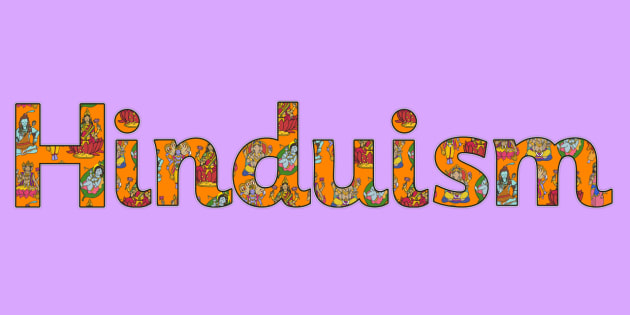
- The term – HINDU :
The word Hindu is derived from the Indo-Aryan and Sanskrit word Sindhu, which means “a large body of water”, covering “river, ocean”. It was used as the name of the Indus river and also referred to its tributaries.
It was a pronunciation variation – Indu/Hindu used by Greeks & Persians to denote India and the Aryan Settlement. 🙄
The ancient Persian Cuneiform inscriptions and the Zend Avesta refer to the word “Hindu” as a geographic name rather than a religious name. When the Persian King Darious 1 extended his empire up to the borders of the Indian subcontinent in 517 BC, some people of the Indian subcontinent became part of his empire and army. Thus for a very long time, the ancient Persians referred to Indian people as “Hindus”. (In Persian the letter H and S are pronounced almost the same so they mistook the word SIND to H and then started calling Hindu and Hindustan)
When Alexander invaded India, the Macedonian army mispronounced the river Sindhu as Indus and the land east of the river as India. The Greek writers who wrote about Alexander preferred to use the same name. The ancient Greeks and Armenians followed the same pronunciation, and thus, gradually the name stuck
By the original definition of the word Hindu, any person living in the land beyond the river Indus is a Hindu, whatever religion he or she practices. Prior to 1947, it referred to people of region that encompassed northern India and Pakistan.
- The term – HINDUISM : The ARYANS / SANATANIS
Eventually the faith practiced by the Aryan Settlers of Indus Valley was termed as Hinduism. Towards the end of the 18th century, the European merchants and colonists referred collectively to the followers of the Dharmic religions in Hindustan — which geographically referred to most parts of the northern Indian subcontinent — as Hindus. Eventually, any person of Indian origin who did not practice Abrahamic religions came to be known as a Hindu, thereby encompassing a wide range of religious beliefs and practices.
One of the accepted views is that the ism was added to Hindu in the early part of the nineteenth century by English writers to denote the culture and religion of the high-caste Brahmans. The word Hinduism was soon adopted by the Hindus themselves, as a term that encompassed their national, social and cultural identity.
The original word for the now-so-called Hindus is Sanatan and Arya. The word Hindu is believed to not appear in the Hindu scriptures, viz, Vedas, Upanishads, and Puranas. The contemporary Hindus are believers of and accept the authority of the said scriptures, hence, they are more accurately identified as Sanatanis or Aryans.

Hinduism is the oldest surviving ancient faith in the world (3000 B.C.E). Hinduism is often misconstrued as a religion, however it is not. Hinduism is a way of life that started being followed by the people of Indus Valley.
Hinduism richly derived its current knowledge not only from major sectarian traditions of India such as Brahmanism, Shaivism, and Vaishnavism but also from many rural and tribal traditions that were prevalent in various parts of the Indian subcontinent since the earliest times.
The truth is by historic as well as legal definition Hinduism represents all the native faiths that originated in ancient India. Going by this definition, whatever faith or religion the Indus people practiced automatically falls under the purview of Hinduism, and thereby becomes the earliest known, historic aspect or tradition of Hinduism or Sanatana Dharma.
Hinduism is not a religion, but a faith and way of life. And is still custom and culture based, not codified like a religion is. That is why people from different places practice different steps during rites and rituals even today. True to its Tribal faith origin, the practice and belief of totems, taboos & nature’s deity worship is extremely evident.
It is extremely possible that the modern ‘Hindu Faith’ is an elixir of totems, deities, and customs of Indus-Valley Civilization, the ancient Aryans settlers and their Vedic practices, the Dravidian and Indigenous native tribes – all in one.
Originally the rules and practices and knowledge were passed down as the word of the mouth like all ancient religion. Later scriptures were written on tablets. Vedas & Upanishads were actually written later on.
The truth about the infamous caste system: Cast system was implemented VERY much later and only as a ‘faction’ practice to distribute work to people based on the aptitude and physical strengths. Since the ancient practice was that knowledge was passed down the generations, therefore, the caste or the faction system was allotted to families rather than individuals. The system itself wasn’t inherently evil as it later perverted into), but was established to streamline the workforce for a smoother social setup.
Despite the caste system, the Indo-Aryans did not remain “pure” (they had certainly already experienced admixture along the way from Eastern Europe to South Asia, anyway), but evidently mixed with the natives ; Today, the speakers of modern Indo-Aryan languages (also known as Indic languages) are neither a straight continuation of ancient Indo-Aryans nor purely descended from indigenous Bronze Age South Asians: they are a completely new ethnic group, with a heritage that combines the Vedic and Harappan heritages (and others). And so has the caste stratification lost its meaning and necessity in the modern world.

A BIRTHPLACE OF FAITHS
Hinduism, Buddhism, Jainism, and Sikhism all originated in India.
Buddhism is the world’s fourth-largest religion with over 520 million followers, or over 7% of the global population, known as Buddhists. Buddhism is a tradition that focuses on personal spiritual development. Buddhists strive for a deep insight into the true nature of life and do not worship gods or deities. Buddhism is a religion of about 300 million people around the world. The word comes from ‘budhi‘, ‘to awaken’. It has its origins about 2,500 years ago when Siddhartha Gotama, known as the Buddha, was himself awakened (enlightened) at the age of 35.
Read: BODH GAYA: A travel guide and a brief history
Jainism is a non-theistic faith founded in India in the 6th century BC by the Jina Vardhamana Mahavira as a reaction against the teachings of orthodox Brahmanism, and still practised there. Jainism is related to an extinct Indian religious tradition named Ājīvika. The later is mentioned in ancient texts of Buddhism and Jainism, and it is attributed to Makkhali Gosala, a contemporary of the Buddha and Mahavira. The Jain religion teaches salvation by perfection through successive lives, and non-injury to living creatures, and is noted for its ascetics. The aim of Jain life is to achieve liberation of the soul.
Sikhism from Sikh, meaning a “disciple”, or a “learner”, is a monotheistic religion that originated in the Punjab region of the Indian subcontinent about the end of the 15th century. It became a religion after two of the Sikh gurus – Guru Arjan and Guru Tegh Bahadur, after they refused to convert to Islam, were tortured and executed by the Mughal rulers. It was made as a balanced tolerant faith to be practiced by the Khalsa warriors as an order for freedom of conscience and religion
While Buddhism and Jainism originated from Hinduism. (They are both branches of Hindu ‘Spiritual’ faith and later made into separate religions.) Sikhism is a religion with elements of both Hinduism and Islam, and was intentionally made so.
The culture, traditions & languages of India is a melting pot of the cultures & faiths and religions that were part of India (Aryans, Dravidians and indigenous Tribes), along with the cultures of the people who Invaded India : Persian & English culture. Even the religions that originated outside of India is practiced in slightly Indianised form, with local influences on various religious traditions being extremely evident.
The beauty of India is its secular communal fabric, where everyone lives together, different religions, hundreds of cultures co-exist together with harmony. And the Constitutional Law that grants equal rights without discrimination to every citizen of India. And this is the land where people from every walk of life & faith come together to celebrate every cultural & religious festival.


YOGA
The development of yoga can be traced back to over 5,000 years ago, but some researchers think that yoga may be up to 10,000 years old! The beginnings of Yoga were developed by the Indus-Sarasvati civilization in Northern India. (While according to modern astronomy the planetary positions that Hindus know of, and have written scriptures of about – when Shiva walked on earth and became the first Yogi – is easily traced back to 60000-70000 years ago!!)
Yoga’s history has many places of obscurity and uncertainty due to its oral transmission of sacred texts and the secretive nature of its teachings. The early writings on yoga were transcribed on fragile palm leaves that were easily damaged, destroyed or lost. The word yoga was first mentioned in the oldest sacred texts, the Rig Veda. The Vedas were a collection of texts containing songs, mantras, and rituals to be used by Brahmans, the Vedic priests.
The most renowned of the Yogic scriptures is the Bhagavad-Gîtâ, composed around 500 B.C.E. The Upanishads took the idea of ritual sacrifice from the Vedas and internalized it, teaching the sacrifice of the ego through self-knowledge, action (karma yoga) and wisdom (jnana yoga).
ORIGIN OF YOGA :
It is believed that Yoga originated from one of the three major Gods: Shiva. SADHGURU. Lord Shiva is considered the Adi Yogi that is the father and founder of Yoga. He is the foremost among the yogis and the first teacher of the science of Yoga. He is the representation of flawless meditation and spirituality. Lord Shiva is always seen meditating in the silence of the mountains of Kailash and sitting in a lotus pose. His meditating and yogic energies are so high that he controls the entire functioning of the universe in his subconscious mind.
In the yogic culture, Shiva is not known as a God, but as the first Guru or the Adi Guru. He is the Adi Yogi or the first Yogi. There are many stories associated with this powerful God and the destroyer of evil.
THE STORY OF FIRST YOGA :
- The first part of Shiva’s teaching was to Parvati, his wife. It was taught in a certain intimacy. In great detail, and in very gentle ways, Shiva expounded the ways of yoga to Devi. The yoga sutras of Shiva are such that almost in every sutra, he refers to her as the resplendent one, the gracious one, the beautiful one. It is only after this that the cosmic joining of Lord Shiva and Goddess Parvati happened. On the night of their union, Shiva and Parvati started the dance of mystic love. Love like Parvati & husband like Shiva, these are both beyond our reach. This is because when on Kailash Parvat, Shiva & Parvati began the dance of mystic love, the distinctions of ‘I’, ‘you’, ‘he’, ‘she’, stopped existing. )It is described as “ujyate anena iti yogah” which means One that joins is yoga.
He taught Parvati 84 Asanas of Yoga which belong to the Vedic parampara. These 84 Asanas have the power to give the person the best of the Rajyoga. Basically, these Yogic positions eradicate the doshas in a person’s life and confer their most auspicious results. This enables the person to remain healthy, wealthy, happy and successful.
So this teaching transpired between two people with utmost intimacy. Intimacy should not be understood as sexuality. It means there is no resistance; this person is absolutely open to whatever is being offered.
- The second set of yogic teaching was expounded to the Sapta Rishis, or the first seven sages. Lord Shiva himself took the initiative and made the Rishis attain 18 Siddhas. These 18 siddhas imparted the divine knowledge to us earthlings. It is believed that this teaching of the 7 Rishis happened on the banks of Kanti Sarovar, near Kedarnath. This teaching happened on the banks of Kanti Sarovar, near Kedarnath. This is when the world’s first yoga programme happened.
This night is celebrated today as Mahashivratri. On this night the planetary positions in the northern hemisphere are such that there is a natural upsurge of energies. If one just stays awake and keeps one’s spine erect throughout the night, it naturally pushes a person towards his spiritual peak.

When we use the word yoga, you should not think of twisting your body or holding your breath or anything like that we are not talking about a particular exercise or a technique. We are talking about the very science of creation and how to take this piece of creation (you) to its ultimate possibility. We are looking at gaining mastery over the fundamental processes of life; the very process of creation and dissolution. It doesn’t matter at what level of evolution a person is right now, for him also, there is a way. For every being on the planet, there is a certain way that is the advantage of yoga.
In short, it is described as a cosmic energy which has supernatural powers to make a person attain the spiritual peak
WORLD’S INTRODUCTION TO YOGA :
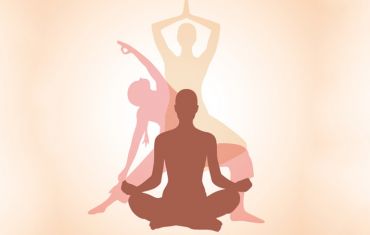
In the late 1800s and early 1900s, yoga masters began to travel to the West, attracting attention and followers. This began at the 1893 Parliament of Religions in Chicago when Swami Vivekananda wowed the attendees with his lectures on yoga and the universality of the world’s religions.
Today, yoga is said to be the world’s fastest growing wellness regimen because it presents spirituality as technology

ART & ARCHITECTURE
Much of Indian architecture, including the Taj Mahal, other works of Mughal architecture, and South Indian architecture, blends ancient local traditions with imported styles. Vernacular architecture is also highly regional in it flavours. Vastu shastra, literally “science of construction” or “architecture” and ascribed to Mamuni Mayan, explores how the laws of nature affect human dwellings; it employs precise geometry and directional alignments to reflect perceived cosmic constructs.
As applied in Hindu temple architecture, it is influenced by the Shilpa Shastras, a series of foundational texts whose basic mythological form is the Vastu-Purusha mandala, a square that embodied the “absolute”.
The Taj Mahal, built in Agra between 1631 and 1648 by orders of Emperor Shah Jahan in memory of his wife, has been described in the UNESCO World Heritage List as “the jewel of Muslim art in India and one of the universally admired masterpieces of the world’s heritage.”Indo-Saracenic Revival architecture, developed by the British in the late 19th century, drew on Indo-Islamic architecture.
LITERATURE
Indians speak some of the ancient and oldest living languages in the world!
The World’s first university was established in Takshashila in 700 BC. More than 10,500 students from all over the world studied more than 60 subjects. The University of Nalanda built in the 4th century BC was one of the greatest achievements of ancient India in the field of education.
India’s cultural heritage is expressed through its myriad of languages in which much great literature and poetry has been written. It can be seen in its music – both in its classical (Carnatic and Hindustani) forms and in modern Bollywood music. India also has a vast tradition of classical and folk dances. Art and theatre flourish amongst the bustling cities of the country, against the backdrop of the ever expanding western influences.
- SANSKRIT — 4000 years old
Introducing the liturgical language of Hinduism, Buddhism and Jainism, the classical language of India and one of, if not the, oldest Indo-European language: Sanskrit.
The first written record of Sanskrit comes in the Rigveda, a collection of Vedic Sanskrit hymns, written in part during the 2nd millennium BCE.
The Nasadiya Sukta is one of the most well-known hymns and addresses on the origin of the universe. The English translation reads:
Amazingly, unlike most ancient languages, Sanskrit is still alive and spoken by as a native language. Based on the 2001 Census of India, Sanskrit is spoken by around 14,000 people in India and a further 1,600 people in Nepal. Organisations like Samskrita Bharati are working to revive the language and rejuvenate the surrounding culture.
The earliest literary writings in India, composed between 1400 BCE and 1200 CE, were in the Sanskrit language. Prominent works of this Sanskrit literature include epics such as the Mahābhārata and the Ramayana, the dramas of Kālidāsa such as the Abhijñānaśākuntalam (The Recognition of Śakuntalā), and poetry such as the Mahākāvya. Kamasutra, the famous book about sexual intercourse also originated in India.
![]()
- TAMIL — 2300 years old
While Tamil is far from the oldest languages on our list, it is certainly one of the most widely spoken. An official language of Sri Lanka, Singapore and two Indian states, Tamil is still spoken by approximately 70 million people across the world.
Tamil has one of the oldest literary canons of any language in the world, with the earliest piece of Tamil writing, Sangam literature, dating to approximately 300 BCE.
Unlike all the other languages on this list which have fallen in and out of popular usage, Tamil has been constantly spoken since 300 BCE. Over the centuries it has continued to develop and evolve and eventually became what it is now: modern Tamil.
Developed between 600 BCE and 300 CE in South India, the Sangam literature, consisting of 2,381 poems, is regarded as a predecessor of Tamil literature. From the 14th to the 18th centuries, India’s literary traditions went through a period of drastic change because of the emergence of devotional poets such as Kabīr, Tulsīdās, and Guru Nānak. This period was characterized by a varied and wide spectrum of thought and expression; as a consequence, medieval Indian literary works differed significantly from classical traditions. In the 19th century, Indian writers took a new interest in social questions and psychological descriptions. In the 20th century, Indian literature was influenced by the works of Bengali poet and novelist Rabindranath Tagore.
MOTION PICTURES

The Indian film industry produces the world’s most-watched cinema. Established regional cinematic traditions exist in the multiple Indian languages. South Indian cinema attracts more than 75% of national film revenue.
Television broadcasting began in India in 1959 as a state-run medium of communication and had slow expansion for more than two decades. The state monopoly on television broadcast ended in 1990s and, since then, satellite channels have increasingly shaped the popular culture of Indian society.
Today, television is the most penetrative media in India; industry estimates indicate that as of 2012 there are over 554 million TV consumers, 462 million with satellite and/or cable connections, compared to other forms of mass media such as press (350 million), radio (156 million) or internet (37 million).
THE INDIAN SOCIETY
Traditional Indian society is defined by a relatively strict social hierarchy. The Indian caste system embodies much of the social stratification and many of the social restrictions found in the Indian subcontinent. Social classes are defined by thousands of endogamous hereditary groups, often termed as jātis, or “castes”. India declared untouchability illegal in 1947 and has since enacted other anti-discriminatory laws and social welfare initiatives, albeit numerous reports suggest that many Dalits (“ex–Untouchables”) and other low castes in rural areas continue to live in segregation and face persecution and discrimination. At the workplace in urban India and in international or leading Indian companies, the caste system has pretty much lost its importance. Family values are important in the Indian tradition, and multi-generational patriarchal joint families have been the norm in India, though nuclear families are becoming common in urban areas. An overwhelming majority of Indians, with their consent, have their marriages arranged by their parents or other family members. Marriage is thought to be for life, and the divorce rate is extremely low.
Many Indian festivals are religious in origin; among them are Diwali, Ganesh Chaturthi, Thai Pongal, Navaratri, Holi, Durga Puja, Eid ul-Fitr, Bakr-Id, Christmas, and Vaisakhi. India has three national holidays which are observed in all states and union territories: Republic Day, Independence Day, and Gandhi Jayanti. Other sets of holidays, varying between nine and twelve, are officially observed in individual states. Traditional Indian dress varies in color and style across regions and depends on various factors, including climate and faith. Popular styles of dress include draped garments such as the sari for women and the dhoti or lungi for men. Stitched clothes, such as the shalwar kameez for women and kurta– pajama combinations or European-style trousers and shirts for men, are also popular. Use of delicate jewelry, modeled on real flowers worn in ancient India, is part of a tradition dating back some 5,000 years; gemstones are also worn in India as talismans.
Indians value their family system a lot. Typically, an Indian’s family encompasses what would be called the extended family in the West. It is routine for Indians to live as part of the paternal family unit throughout their lives – i.e. sons live together with their parents all their lives, and daughters live with their parents till they get married. The relationship is mutually self-supporting. Parents may support their children for longer than is common in the West, brothers and sisters may support each other, and sons are expected to take care of their parents in their old age. “Living with parents” does not carry the same stigma as it does in the US. Naturally, the arrangements are not perfect and there are strains and breakups, especially by the time the third generation grows up. Also, it has now become common for children to move away from the parental house for education and employment. Nonetheless, it is fair to say that the joint family is still seen as the norm and an ideal to aspire to, and Indians continue to care about their family’s honor, achievements and failures even while they are not living together

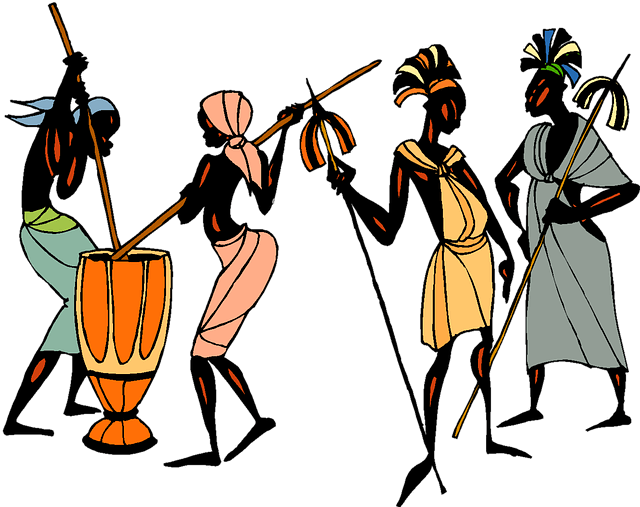
INDIGENOUS TRIBES
Constitution of India has recognized tribal communities in India under ‘Schedule 5’ of the constitution. Hence the tribes recognized by the Constitution are known as ‘ Scheduled Tribes’. There are around 645 distinct tribes in India.
MAJOR TRIBES IN INDIA
- Andhra Pradesh: Andh, Sadhu Andh, Bhagata, Bhil, Chenchus (Chenchawar), Gadabas, Gond, Goundu, Jatapus, Kammara, Kattunayakan, Kolawar, Kolam, Konda, Manna Dhora, Pardhan, Rona, Savaras, Dabba Yerukula, Nakkala, Dhulia, Thoti, Sugalis.
- Arunachal Pradesh: Apatanis, Abor, Dafla, Galong, Momba, Sherdukpen, Singpho.
- Assam: Chakma, Chutiya, Dimasa, Hajong, Garos, Khasis, Gangte.
- Bihar: Asur, Baiga, Birhor, Birjia, Chero, Gond, Parhaiya, Santhals, Savar.
- Chhattisgarh: Agariya, Bhaina, Bhattra, Biar, Khond, Mawasi, Nagasia.
- Goa: Dhodia, Dubia, Naikda, Siddi,Varli.
- Gujarat: Barda, Bamcha, Bhil, Charan, Dhodia, Gamta, Paradhi, Patelia.
- Himachal Pradesh: Gaddis, Gujjars, Khas, Lamba, Lahaulas, Pangwala, Swangla.
- Jammu and Kashmir: Bakarwal, Balti, Beda, Gaddi, Garra, Mon, Purigpa, Sippi.
- Jharkhand: Birhors, Bhumij, Gonds, Kharia, Mundas, Santhals, Savar.
- Karnataka: Adiyan, Barda, Gond, Bhil, Iruliga, Koraga, Patelia, Yerava.
- Kerala: Adiyan, Arandan, Eravallan, Kurumbas, Malai arayan, Moplahs, Uralis.
- Madhya Pradesh: Baigas, Bhils, Bharia, Birhors, Gonds,Katkari, kharia, Khond, Kol, Murias.
- Maharashtra: Bhaina, Bhunjia, Dhodia, Katkari, Khond, Rathawa, Warlis.
- Manipur: Aimol, Angami, Chiru, Kuki, Maram, Monsang, Paite, Purum, Thadou.
- Meghalaya: Chakma, Garos, Hajong, Jaintias Khasis, Lakher, Pawai, Raba.
- Mizoram: Chakma, Dimasa, Khasi, Kuki, Lakher, Pawai, Raba, Synteng.
- Nagaland: Angami, Garo, Kachari, Kuki, Mikir, Nagas, Sema.
- Odisha: Gadaba, Ghara, Kharia, Khond, Matya, Oraons, Rajuar, Santhals.
- Rajasthan: Bhils, Damaria, Dhanka, Meenas(Minas), Patelia, Sahariya.
- Sikkim: Bhutia, Khas, Lepchas.
- Tamil Nadu: Adiyan, Aranadan, Eravallan, Irular, Kadar, Kanikar, Kotas, Todas.
- Telangana: Chenchus.
- Tripura: Bhil, Bhutia, Chaimal, Chakma, Halam, Khasia, Lushai, Mizel, Namte.
- Uttarakhand: Bhotias, Buksa, Jannsari, Khas, Raji, Tharu.
- Uttar Pradesh: Bhotia, Buksa, Jaunsari, Kol, Raji, Tharu.
- West Bengal: Asur, Khond, Hajong, Ho, Parhaiya, Rabha, Santhals, Savar.
- Andaman and Nicobar: Oraons, Onges, Sentinelese, Shompens.
- Little Andaman: Jarawa.
- North-East: Abhors, Chang, Galaong, Mishimi, Singpho, Wancho.
INTERESTING FACTS :
- The total population of Scheduled Tribes is 84,326,240 as per the Census 2001 which accounts for 8.2% of the total population of the country. The share of the Scheduled Tribe population in urban areas is a meager 2.4%.
- Madhya Pradesh, Maharastra, Orissa, Gujarat, Rajasthan, Jharkhand, Chhattisgarh, Andhra Pradesh, West Bengal, and Karnataka are the State having a larger number of Scheduled Tribes These states account for 83.2% of the total Scheduled Tribe population of the country. Assam, Meghalaya, Nagaland, Jammu & Kashmir, Tripura, Mizoram, Bihar, Manipur, Arunachal Pradesh, and Tamil Nadu, account for another 15.3% of the total Scheduled Tribe population. The share of the remaining states / Uts is negligible.
- The Schedule Tribes in India form the largest proportion of the total population in Lakshadweep and Mizoram followed by Nagaland and Meghalaya.
- Madhya Pradesh has the largest number of scheduled Tribes followed by Bihar.
- Bastar district of Madhya Pradesh consists of the largest number of Scheduled Tribes.
- There are no Scheduled Tribes in Punjab, Delhi, Chandigarh, Pondicherry, Haryana.
SCIENCE & TECHNOLOGY
“We owe a lot to the ancient Indians, teaching us how to count. Without which most modern scientific discoveries would have been impossible.” – Albert Einstein
One of the oldest civilizations in the world, the Indian civilization has a strong tradition of science and technology. Ancient India was a land of sages and seers as well as a land of scholars and scientists. Research has shown that from making the best steel in the world to teaching the world to count, India was actively contributing to the field of science and technology centuries long before modern laboratories were set up. Many theories and techniques discovered by the ancient Indians have created and strengthened the fundamentals of modern science and technology. While some of these groundbreaking contributions have been acknowledged, some are still unknown to most.
Here is a list of contributions, made by ancient Indians to the world of science and technology, that will make you feel proud to be an Indian.
MATHEMATICS :
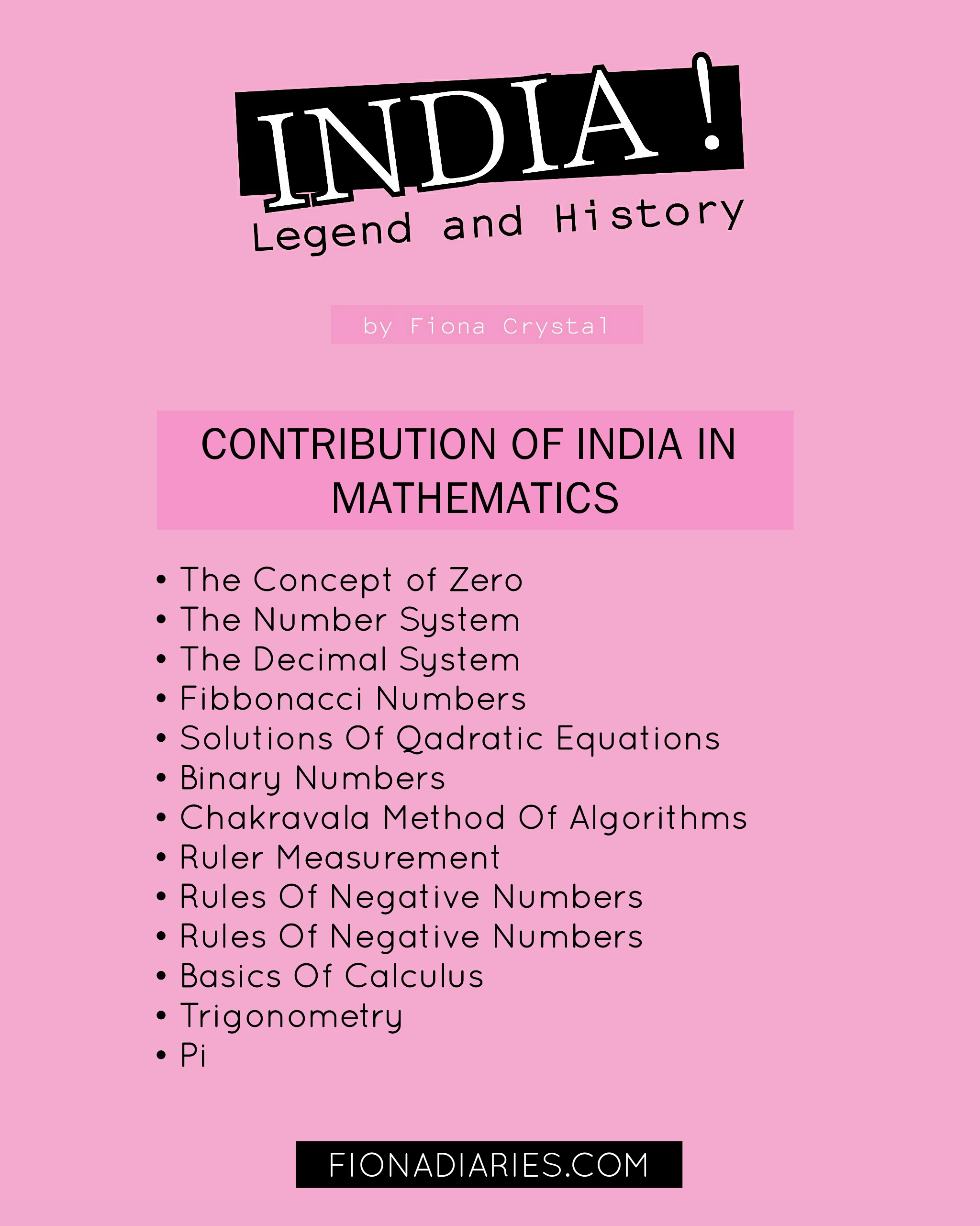
Mathematics on the Indian subcontinent has a rich history going back over 3,000 years and thrived for centuries before similar advances were made in Europe, with its influence meanwhile spreading to China and the Middle East.
As well as giving us the concept of zero, Indian mathematicians made seminal contributions to the study of trigonometry, algebra, arithmetic and negative numbers among other areas. Perhaps most significantly, the decimal system that we still employ worldwide today was first seen in India.
- THE CONCEPT OF ZERO :
Little needs to be written about the mathematical digit ‘zero’, one of the most important inventions of all time. Mathematician Aryabhata was the first person to create a symbol for zero as early as the 3rd or 4th century. It was through his efforts that mathematical operations like addition and subtraction started using the digit, zero. The concept of zero and its integration into the place-value system also enabled one to write numbers, no matter how large, by using only ten symbols.
- THE NUMBER SYSTEM :
As far back as 1200 BC, mathematical knowledge was being written down as part of a large body of knowledge known as the Vedas. Once zero was introduced, almost all of the mathematical mechanics would be in place to enable ancient Indians to study higher mathematics. Indians, as early as 500 BCE, had devised a system of different symbols for every number from one to nine. This notation system was adopted by the Arabs who called it the hind numerals. Centuries later, this notation system was adopted by the western world who called them the Arabic numerals as it reached them through the Arab traders.
- THE DECIMAL SYSTEM :
India gave the ingenious method of expressing all numbers by means of ten symbols – the decimal system. In this system, each symbol received a value of position as well as an absolute value. Due to the simplicity of the decimal notation, which facilitated calculation, this system made the uses of arithmetic in practical inventions much faster and easier.
- FIBONACCI NUMBERS :
The Fibonacci numbers and their sequence first appear in Indian mathematics as mātrāmeru, mentioned by Pingala in connection with the Sanskrit tradition of prosody. Later on, the methods for the formation of these numbers were given by mathematicians Virahanka, Gopala and Hemacandra , much before the Italian mathematician Fibonacci introduced the fascinating sequence to Western European mathematics.
- SOLUTIONS OF QUADRATIC EQUATIONS :
In the seventh century, the first written evidence of the rules for working with zero was formalized in the Brahmasputha Siddhanta. In his seminal text, the astronomer Brahmagupta introduced rules for solving quadratic equations (so beloved of secondary school mathematics students) and for computing square roots.
- BINARY NUMBERS :
Binary numbers is the basic language in which computer programs are written. Binary basically refers to a set of two numbers, 1 and 0, the combinations of which are called bits and bytes. The binary number system was first described by the Vedic scholar Pingala, in his book Chandahśāstra, which is the earliest known Sanskrit treatise on prosody ( the study of poetic meters and verse).
- RULER MEASUREMENT :
Excavations at Harappans sites have yielded rulers or linear measures made from ivory and shell. Marked out in minute subdivisions with amazing accuracy, the calibrations correspond closely with the hasta increments of 1 3/8 inches, traditionally used in the ancient architecture of South India. Ancient bricks found at the excavation sites have dimensions that correspond to the units on these rulers.
- RULES OF NEGATIVE NUMBERS :
Brahmagupta also demonstrated rules for working with negative numbers. He referred to positive numbers as fortunes and negative numbers as debts. He wrote down rules that have been interpreted by translators as: “A fortune subtracted from zero is a debt,” and “a debt subtracted from zero is a fortune”. He also ruled that “The product of a debt and a fortune is a debt” – a positive number multiplied by a negative is a negative. (Something we all now study in school)
For the large part, European mathematicians were reluctant to accept negative numbers as meaningful. Many took the view that negative numbers were absurd. They reasoned that numbers were developed for counting and questioned what you could count with negative numbers. Indian and Chinese mathematicians recognized early on that one answer to this question was debts.
- BASICS OF CALCULUS :
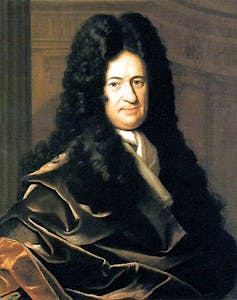
This reluctance to adopt negative numbers, and indeed zero, held European mathematics back for many years. Gottfried Wilhelm Leibniz was one of the first Europeans to use zero and the negatives in a systematic way in his development of calculus in the late 17th century. But Indian mathematician Bhāskara had already discovered many of Leibniz’s ideas over 500 years earlier. Bhāskara also made major contributions to algebra, arithmetic, geometry, and trigonometry. He provided many results, for example on the solutions of certain “Diophantine” equations, that would not be rediscovered in Europe for centuries.
Indian mathematics emerged in the Indian subcontinent from 1200 BCE until the end of the 18th century, after which Indian mathematicians were directly part of the development of global mathematics. In the classical period of Indian mathematics (400 CE to 1600 CE), important contributions were made by scholars like Aryabhata, Brahmagupta, Mahāvīra, Bhaskara II, Madhava of Sangamagrama and Nilakantha Somayaji. The decimal number system in worldwide use today was first recorded in Indian mathematics. Indian mathematicians made early contributions to the study of the concept of zero as a number, negative numbers, arithmetic, and algebra.
- PI & THE INFINITE SERIES :
“Baudhyana” calculated the value of Pi, 500 years earlier than Pythagoras.
Bhaskara has given an approximate value of PI as 22/7 and more accurate value as 3.1416. He knew the concept of infinity and called it as ‘khahar rashi’, which means ‘Anant’
- THE INFINITE SERIES :
- The historically first exact formula for π, based on infinite series, was not available until a millennium later when in the 14th century the Madhava–Leibniz series was discovered in Indian mathematics
The first written description of an infinite series that could be used to compute π was laid out in Sanskrit verse by Indian astronomer Nilakantha Somayaji in his Tantrasamgraha, around 1500 AD. Nilakantha attributes the series to an earlier Indian mathematician, Madhava of Sangamagrama, who lived c. 1350 – c. 1425. Several infinite series are described, including series for sine, tangent, and cosine, which are now referred to as the Madhava series or Gregory–Leibniz series.
- TRIGONOMETRY :
In addition, trigonometry was further advanced in India, and, in particular, the modern definitions of sine and cosine were developed there. These mathematical concepts were transmitted to the Middle East, China, and Europeans led to further developments that now form the foundations of many areas of mathematics.
A later landmark in Indian mathematics was the development of the series expansions for trigonometric functions (sine, cosine, and arc tangent) by mathematicians of the Kerala school in the 15th century CE. Their remarkable work, completed two centuries before the invention of calculus in Europe, provided what is now considered the first example of a power series (apart from geometric series)
![]()
Bhaskaracharya ( Bhāskara II) :

Contributions to mathematics and astronomy –
- He was an Indian mathematician and astronomer. He extended Brahmagupta’s work on number systems.
- Bhaskaracharya’s work in Algebra, Arithmetic and Geometry catapulted him to fame and immortality.
- Preliminary concept of mathematical analysis.
- Preliminary concept of infinitesimal calculus, along with notable contributions towards integral calculus.
- Conceived differential calculus, after discovering the derivative and differential coefficient.
- In Siddhanta Shiromani, Bhaskara developed spherical trigonometry along with a number of other trigonometric results.
- Terms for numbers :
In English, cardinal numbers are only in multiples of 1000. However, Bhaskaracharya has given the terms for numbers in multiples of ten and he says that these terms were coined by ancients for the sake of positional values.
Bhaskar’s terms for numbers are as follows: eka(1), dasha(10), shata(100), sahastra(1000), ayuta(10,000), laksha(100,000), prayuta (1,000,000=million), koti(107), arbuda(108), abja(109=billion), kharva (1010), nikharva (1011), mahapadma (1012=trillion), shanku(1013), jaladhi(1014), antya(1015=quadrillion), Madhya (1016) and parardha(1017).
- PELL’S EQUATION : ‘Brahmagupta-Bhaskaracharya equation’
Though the equation is recognized by his name Pell had never solved the equation. Much before Pell, the equation was solved by an ancient and eminent Indian mathematician, Brahmagupta (628 AD). The solution is given in his Brahmasphutasiddhanta. He gave the solution for five cases. Henceforth the so-called Pell’s equation should be recognized as ‘Brahmagupta-Bhaskaracharya equation’.
- CHAKRAVALA METHOD OF ALGORITHMS :
The chakravala method is a cyclic algorithm to solve indeterminate quadratic equations, including the Pell’s equation. This method for obtaining integer solutions was developed by Brahmagupta, one of the well known mathematicians of the 7th century CE. Another mathematician, Jayadeva later generalized this method for a wider range of equations, which was further refined by Bhāskara II in his Bijaganita treatise.
He gave the general solutions of:
- Pell’s equation using the chakravala method.
- The indeterminate quadratic equation using the chakravala method.
- Simple mathematical methods :
Bhaskara has given simple methods to find the squares, square roots, cube, and cube roots of big numbers. He has proved the Pythagoras theorem in only two lines. The famous Pascal Triangle was Bhaskara’s ‘Khandameru’. Bhaskara has given problems on that number triangle. Pascal was born 500 years after Bhaskara. Several problems on permutations and combinations are given in Lilawati. Bhaskar. He has called the method ‘ankapaash’.
- GRAVITY :
Bhaskaracharya ( Bhāskara II) was the first to discover gravity, 500 years before Sir Isaac Newton. He was the champion among mathematicians of ancient and medieval India. His works fired the imagination of Persian and European scholars, who through research on his works earned fame and popularity. In the Surya Siddhanta makes a note on the force of gravity:
“Objects fall on earth due to a force of attraction by the earth. Therefore, the earth, planets, constellations, moon, and sun are held in orbit due to this attraction.”
A GLANCE AT THE ASTRONOMICAL ACHIEVEMENTS OF BHASKARACHARYA :
- The Earth is not flat, has no support and has a power of attraction.
- The north and south poles of the Earth experience six months of day and six months of night.
- One day of Moon is equivalent to 15 earth-days and one night is also equivalent to 15 earth-days.
- Earth’s atmosphere extends to 96 kilometers and has seven parts.
- There is a vacuum beyond the Earth’s atmosphere.
- He had knowledge of precession of equinoxes. He took the value of its shift from the first point of Aries as 11 degrees. However, at that time it was about 12 degrees.
- Ancient Indian Astronomers used to define a reference point called ‘Lanka’. It was defined as the point of intersection of the longitude passing through Ujjaini and the equator of the Earth. Bhaskara has considered three cardinal places with reference to Lanka, the Yavakoti at 90 degrees east of Lanka, the Romak at 90 degrees west of Lanka and Siddhapoor at 180 degrees from Lanka. He then accurately suggested that, when there is a noon at Lanka, there should be sunset at Yavkoti and sunrise at Romak and midnight at Siddhapoor.
- Bhaskaracharya had accurately calculated apparent orbital periods of the Sun and orbital periods of Mercury, Venus, and Mars. There is a slight difference between the orbital periods he calculated for Jupiter and Saturn and the corresponding modern values
- He calculated the time taken by the earth to orbit the sun hundreds of years before the astronomer Smart. Time is taken by earth to orbit the sun: (5th century) 365.258756484 days.
The leap, made in India, that transformed zero from a simple placeholder to a number in its own right indicates the mathematically enlightened culture that was flourishing on the subcontinent at a time when Europe was stuck in the dark ages.
![]()
SCIENCE :

- METHOTREXATE :
In biological sciences, a team led by Yellapragada Subbarao synthesized methotrexate,one of the earliest and most commonly used chemotherapy drug.
- VARIOLATION :
Variolation, a form of inoculation to produce immunity to disease, probably originated in India. This method reached Europe, where smallpox lead to 8 – 20% of deaths, in the 18th century. Vaccination, a safer form of inoculation, was used in crude form in India before the more advanced vaccination of Edward Jenner became standard.
- ORT METHOD :
Dilip Mahalanabis’s Oral rehydration therapy (ORT) methods to treat diarrhea, the leading cause of infant mortality in developing countries before ORT, has been called, “the most important medical advance [of the 20th] century” by the Lanc
- A THEORY OF ATOMS :
one of the notable scientists of ancient India was Kanad who is said to have devised the atomic theory centuries before John Dalton was born. He speculated the existence of anu or small indestructible particles, much like an atom. He also stated that anu can have two states — absolute rest and a state of motion. He further held that atoms of same substance combined with each other in a specific and synchronized manner to produce dvyanuka (diatomic molecules) and tryanuka (triatomic molecules).
- THE BOSE PARTICLES – BOSONE :
In physics, theories about atoms date as early as the 5th century B.C.E. Satyendra Nath Bose, after whom the class of particles Bosons is named after, worked on quantum mechanics to provide the foundation for Bose-Einstein statistics and the theory of the Bose-Einstein condensate.
- WIRELESS COMMUNICATION :
Jagadish Chandra Bose worked on wireless communication and was named one of the fathers of radio science by the IEEE. The pioneer of wireless communication was Prof. Jagdish Bose and not Marconi.
- THE HELIOCENTRIC THEORY :
Mathematicians of ancient India often applied their mathematical knowledge to make accurate astronomical predictions. The most significant among them was Aryabhatta whose book, Aryabhatiya, represented the pinnacle of astronomical knowledge at the time. He correctly propounded that the Earth is round, rotates on its own axis and revolves around the Sun i.e the heliocentric theory. He also made predictions about the solar and lunar eclipses, duration of the day as well as the distance between the Earth and the Moon.
- WOOTZ STEEL :
A pioneering steel alloy matrix developed in India, Wootz steel is a crucible steel characterized by a pattern of bands that was known in the ancient world by many different names such as Ukku, Hindwani, and Seric Iron. This steel was used to make the famed Damascus swords of yore that could cleave a free-falling silk scarf or a block of wood with the same ease. Produced by the Tamils of the Chera Dynasty, the finest steel of the ancient world was made by heating black magnetite ore in the presence of carbon in a sealed clay crucible kept inside a charcoal furnace.
- SMELTING OF ZINC :
India was the first to smelt zinc by the distillation process, an advanced technique derived from a long experience of ancient alchemy. The ancient Persians had also attempted to reduce zinc oxide in an open furnace but had failed. Zawar in the Tiri valley of Rajasthan is the world’s first known ancient zinc smelting site. The distillation technique of zinc production goes back to the 12th Century AD and is an important contribution of India to the world of science.
- SEAMLESS METAL GLOBE :
Considered one of the most remarkable feats in metallurgy, the first seamless celestial globe was made in Kashmir by Ali Kashmiri ibn Luqman in the reign of Emperor Akbar. In a major feat in metallurgy, Mughal metallurgists pioneered the method of lost-wax casting to make twenty other globe masterpieces in the reign of the Mughal Empire. Before these globes were rediscovered in the 1980s, modern metallurgists believed that it was technically impossible to produce metal globes without any seams, even with modern technology.
- AYURVEDA :
Long before the birth of Hippocrates, Charaka authored a foundational text, Charakasamhita, on the ancient science of Ayurveda. Referred to as the Father of Indian Medicine, Charaka was was the first physician to present the concept of digestion, metabolism, and immunity in his book. Charaka’s ancient manual on preventive medicine remained a standard work on the subject for two millennia and was translated into many foreign languages, including Arabic and Latin.
- IRON CASED ROCKETS :
The first iron-cased rockets were developed in the 1780s by Tipu Sultan of Mysore who successfully used these rockets against the larger forces of the British East India Company during the Anglo-Mysore Wars. He crafted long iron tubes, filled them with gunpowder and fastened them to bamboo poles to create the predecessor of the modern rocket. With a range of about 2 km, these rockets were the best in the world at that time and caused as much fear and confusion as damage. Due to them, the British suffered one of their worst ever defeats in India at the hands of Tipu.
- OIL SPILLS EATING MICROBE :
In a case decided by the U.S. Supreme Court, an Indian-American woman scientist, Dr. Ananda Chakrabaty, won the argument that persons may be granted patents for the useful manufacture of living organisms. She defeated the U.S. Patent Office, that argued that living things may not be patented, thus establishing the legal foundation for the biotech industry, (Diamond vs. Chakrabaty, 1980). Dr. Chakrabaty invented a microbe that eats oil spills.
![]()
SASRUTA

- PLASTIC SURGERY :
One of the earliest known cosmetic surgeons was a Hindu legend. The title of “father of plastic surgery” has been bestowed on both Gaspare Tagliacozzi, an Italian surgeon from the 16th century, and Harold Gillies, a 19th century surgeon from New Zealand. While they’re both celebrated for their pioneering contributions to modern plastic surgery, neither holds the title of the first plastic surgeon.
An ancient Indian healer named Sushruta was actually the FIRST plastic surgeon on record.
Sushruta lived in India around 600 BCE, long enough ago to earn him a mention in the epic ancient Hindu poem, the Mahabharata, where it’s said that he was the son of a legendary Hindu sage.
However, Sushruta’s true legacy is his surgical work as detailed in his Sushruta Samhita, a Sanskrit text that’s still considered foundational for modern surgery. In it, he describes a wide variety of cosmetic procedures, including skin grafts and other relatively complex forms of plastic surgery.
Reconstructive surgery techniques were being carried out in India by 800 BC. Sushruta was a physician who made important contributions to the field of plastic and cataract surgery in 6th century BC. The medical works of both Sushruta and Charak, originally in Sanskrit, were translated into the Arabic language during the Abbasid Caliphate in 750 AD. The Arabic translations made their way into Europe via intermediaries. In Italy, the Branca family of Sicily and Gaspare Tagliacozzi (Bologna) became familiar with the techniques of Sushruta.
- RHINOPLASTY: The British learned about plastic surgery in India
British physicians traveled to India to see rhinoplasties being performed by Indian methods. Reports on Indian rhinoplasty performed by a Kumhar vaidya were published in the Gentleman’s Magazine by 1794. Joseph Constantine Carpue spent 20 years in India studying local plastic surgery methods. Carpue was able to perform the first major surgery in the Western world in the year 1815. Instruments described in the Sushruta Samhita were further modified in the Western world.
- CATARACT SURGERY :
The first cataract surgery is said to have been performed by the ancient Indian physician Sushruta, way back in 6th century BCE. To remove the cataract from the eyes, he used a curved needle, Jabamukhi Salaka, to loosen the lens and push the cataract out of the field of vision. The eye would then be bandaged for a few days till it healed completely. Sushruta’s surgical works were later translated to Arabic language and through the Arabs, his works were introduced to the West.


Interesting Facts about India
- India is the world’s largest, oldest, continuous civilization.
- India never invaded any country in her last 10000 years of history.
- India is the world’s largest democracy.
- Varanasi, also known as Benares, was called “the ancient city” when Lord Buddha visited it in 500 B.C.E, and is the oldest, continuously inhabited city in the world today.
- Sanskrit is the mother of all the European languages. Sanskrit is the most suitable language for computer software – a report in Forbes magazine, July 1987.
- Although modern images of India often show poverty and lack of development, India was the richest country on earth until the time of British invasion in the early 17th Century. Christopher Columbus was attracted by India’s wealth.
- The earliest reservoir and dam for irrigation was built in Saurashtra.
- According to Saka King Rudradaman I of 150 CE a beautiful lake called Sudarshana was constructed on the hills of Raivataka during Chandragupta Maurya’s time.
- Chess (Shataranja or AshtaPada) was invented in India.
- India is one of the few countries in the World, which gained independence without violence.
- India has the second largest pool of Scientists and Engineers in the World.
- India is the largest English speaking nation in the world.
- India is the only country other than US and Japan, to have built a super computer indigenously.
- India is one of only three countries that makes supercomputers (the US and Japan are the other two).
- India is one of six countries that launch satellites.
- The Bombay stock exchange lists more than 6,600 companies. Only the NYSE has more.
- Eight Indian companies are listed on the NYSE; three on the NASDAQ.
- By volume of pills produced, the Indian pharmaceutical industry is the world’s second largest after China.
- India has the second largest community of software developers, after the U.S.
- India has the second largest network of paved highways, after the U.S.
- India is the world’s largest producer of milk, and among the top five producers of sugar, cotton, tea, coffee, spices, rubber, silk, and fish.
- 100 of the Fortune 500 companies have R&D facilities in India.
- Two million people of Indian origin live in the U.S.
- Indian-born Americans are among the most affluent and best educated of the recent immigrant groups in the U.S.
- Thirty percent of the R&D researchers in American pharmaceutical companies are Indian Americans.
- Nearly 49% of the high-tech startups in Silicon Valley and Washington, D.C. are owned by Indians or Indian-Americans.
- India sends more students to U.S. colleges than any country in the world. In 2004-2005, over 80,000 Indian students entered the U.S. China sent only 65,000 students during the same time.

Some Images of our Incredible India :
THE HINDU WEDDING
A Hindu wedding is traditionally conducted at least partially in Sanskrit, the language of most holy Hindu ceremonies. The local language of the people involved is also used since most Hindus do not understand Sanskrit. Hindus have many rituals that have evolved since traditional times and differ in many ways from the modern western wedding ceremony and also among the different regions, families, and castes. The Hindus attach a lot of importance to marriages, and the ceremonies are very colorful and extend for several days. Also, outside of the participants’ home is decorated with balloons and other decorations.
In India, where most Hindus live, the laws relating to marriage differ by religion. According to the Hindu Marriage Act of 1955, passed by the Parliament of India, for all legal purposes, all Hindus of any caste, creed or sect, Sikh, Buddhists, and Jains have deemed Hindus and can intermarry. By the Special Marriage Act, 1954, a Hindu can marry a person who is not Hindu, employing any ceremony, provided specified legal conditions are fulfilled.
The pre-wedding ceremonies include engagement (involving vagdana or oral agreement and Lagna-Patra written declaration), and the arrival of the groom’s party at the bride’s residence, often in the form of a formal procession. The post-wedding ceremonies involve welcoming the bride to her new home.
Despite modern Hinduism being largely based on the puja form of the worship of devas as enshrined in the Puranas, a Hindu wedding ceremony at its core is essentially a Vedic yajna (a fire-sacrifice), in which the Aryan deities are invoked in the Indo-Aryan style. It has a deep origin in the ancient ceremony of cementing the bonds of friendship/alliance (even among people of the same sex or people of different species in mythological contexts), although today, it only survives in the context of weddings. The primary witness of a Hindu marriage is the fire-deity (or the Sacred Fire) Agni. By law and tradition, no Hindu marriage is deemed complete unless in the presence of the Sacred Fire seven encirclements have been made around it by the bride and the groom together. (In many South Indian Hindu marriages these are not required.)
The Basis for a Fulfilling Married Life in Hinduism :
A Vedic sage emphasized that the basis of happy and fulfilling married life is the sense of unity, intimacy, and love between husband and wife both physically, mentally and spiritually. Hence wife is considered to be the Ardhangani of the husband as per Hindu tradition. Thus, marriage is not for self-indulgence, but rather should be considered a lifelong social and spiritual responsibility. Married life is considered an opportunity for two people to grow from life partners into soul mates
Main ritual :
The Saptapadi (Sanskrit for seven steps/feet), is perhaps the most important component of Vedic Hindu weddings. The couple conducts seven circuits of the Holy Fire (Agni), which is considered a witness to the vows they make each other. In some regions, sashes worn by the bride and groom are tied together for this ceremony. Elsewhere, the groom holds the bride’s right hand in his own right hand. Each circuit of the consecrated fire is led by either the bride or the groom, varying by community and region. Usually, the bride leads the groom in the first circuit. In North India, the first six circuits are led by the bride and the final one by the groom. In Central India, the bride leads the first three or four circuits. With each circuit, the couple makes a specific vow to establish some aspect of a happy relationship and household for each other.
In South Indian weddings, after each saying a mantra at each of the seven steps, the couple say these words together:
“Now let us make a vow together. We shall share love, share the same food, share our strengths, share the same tastes. We shall be of one mind, we shall observe the vows together. I shall be the Samaveda, you the Rigveda, I shall be the Upper World, you the Earth; I shall be the Sukhilam, you the Holder – together we shall live and beget children, and other riches; come thou, O beautiful girl!“
In North Indian weddings, the bride and the groom say the following words after completing the seven steps:
“We have taken the Seven Steps. You have become mine forever. Yes, we have become partners. I have become yours. Hereafter, I cannot live without you. Do not live without me. Let us share the joys. We are word and meaning, united. You are thought and I am sound. May the night be honey-sweet for us. May the morning be honey-sweet for us. May the earth be honey-sweet for us. May the heavens be honey-sweet for us. May the plants be honey-sweet for us. May the sun be all honey for us. May the cows yield us honey-sweet milk. As the heavens are stable, as the earth is stable, as the mountains are stable, as the whole universe is stable, so may our union be permanently settled.
The bride and groom are told about their duties and responsibilities in married life by the priest. These vows direct the couple to a positive path of action. They help in promoting marital happiness for a lifetime.
Hindu wedding ceremony at its core is essentially a Vedic yajna (a fire-sacrifice), in which the Aryan deities are invoked in the Indo-Aryan style. It has a deep origin in the ancient ceremony of cementing the bonds of friendship/alliance (even among people of the same sex or people of different species in mythological contexts), although today, it only survives in the context of weddings. The primary witness of a Hindu marriage is the fire-deity (or the Sacred Fire) Agni. By law and tradition, no Hindu marriage is deemed complete unless in the presence of the Sacred Fire seven encirclements have been made around it by the bride and the groom together. (In many South Indian Hindu marriages these are not required.)
South Asian weddings are very filled with ritual and celebration that continue for several days. Generally, anywhere between 100 to 10,000 people attend. Often, many of the attendees are unknown to the bride and groom themselves. Though most Indian marriages are arranged, some couples in urban areas consummate “love marriages”, in which the partners decide to marry each other without family involvement or assistance. The traditional Indian wedding is about two families being brought together socially, with as much emphasis placed on the families coming closer as the married couple.
Many wedding customs are common among Hindus, Jains, Sikhs, and even Muslims. They combine local, religious and family traditions. The period of Hindu marriage ceremonies dates from the application (lagan) of Tilak.
Here are some of the look of the traditional brides in India :

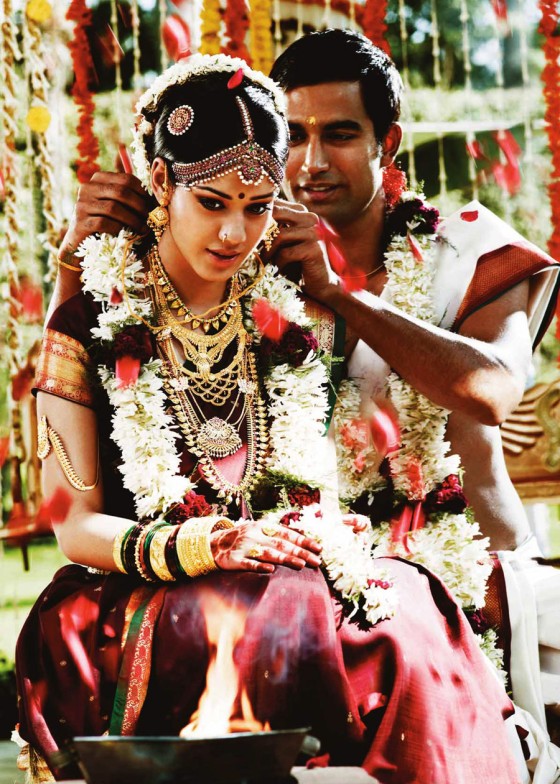

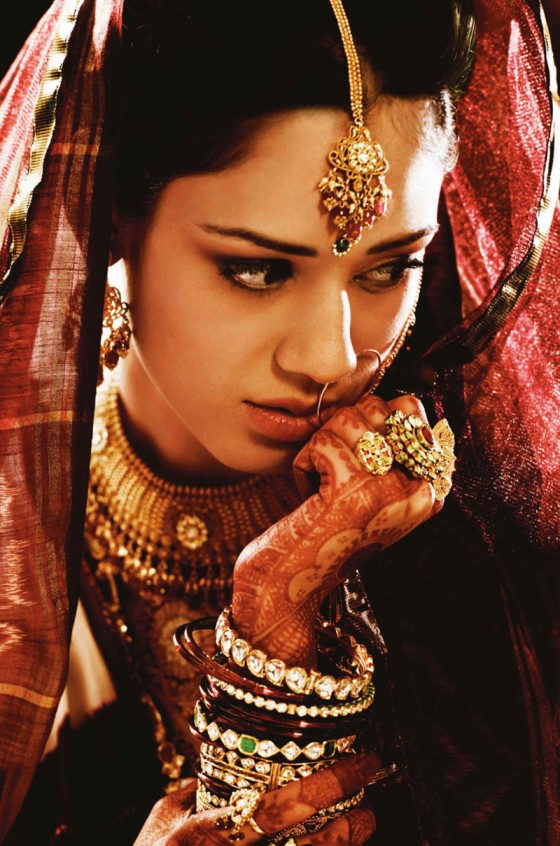
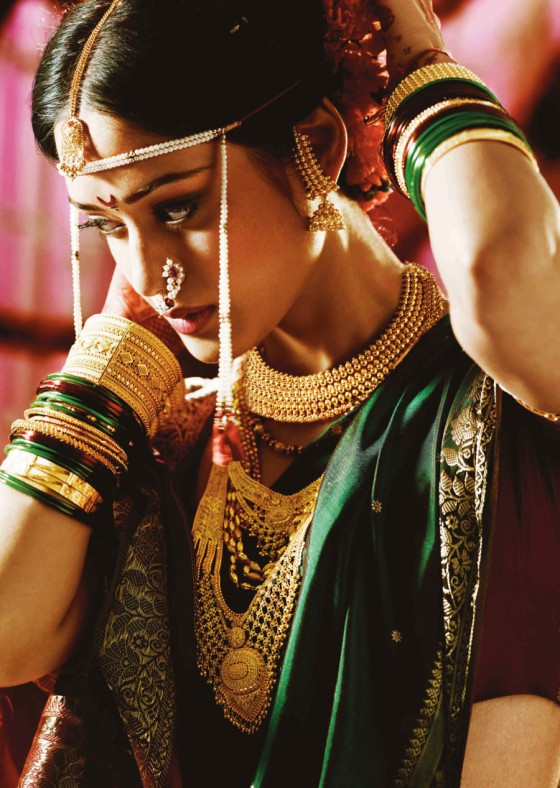


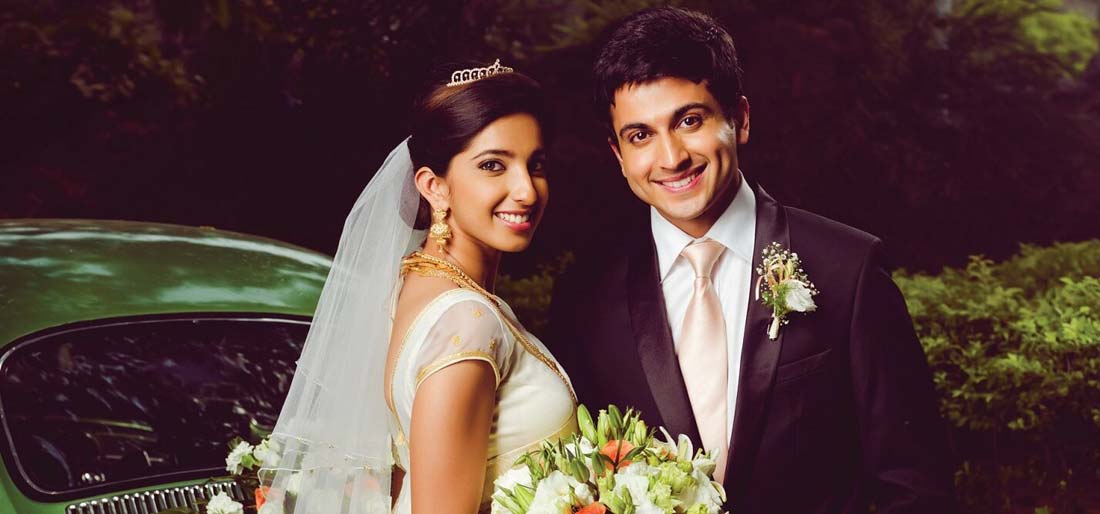


Isn’t India amazing!
Share this post with others so they too can learn more about India. 🙂
♡ XOXO ♡
© Fiona Crystal • 📆 June, 2013 & 2018 ☽❍☾
Fiona Diaries — ‘Heartbeats and Wild Things’ • All rights reserved
ARCHIVED • Published on: June 14, 2013 @ 03:02 • Revised on : June 29, 2018


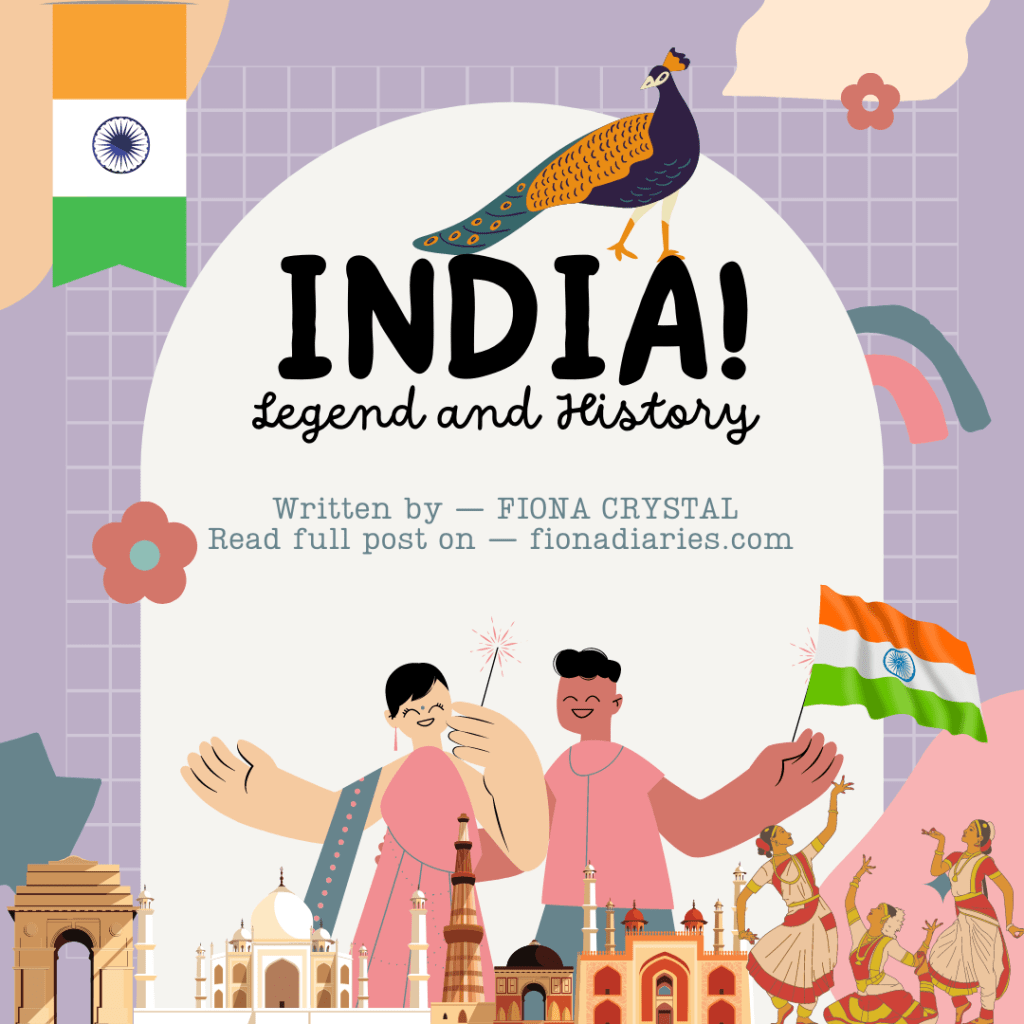










































































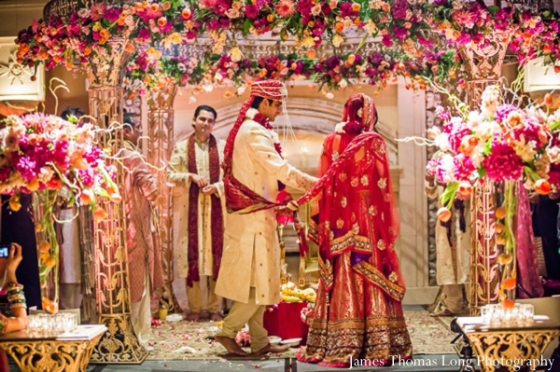
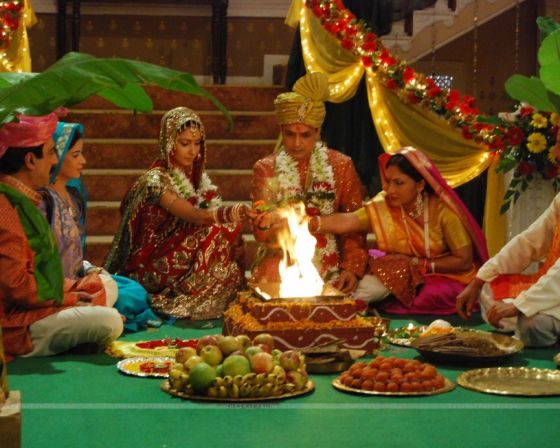


Would love to hear your thoughts. Leave a Reply